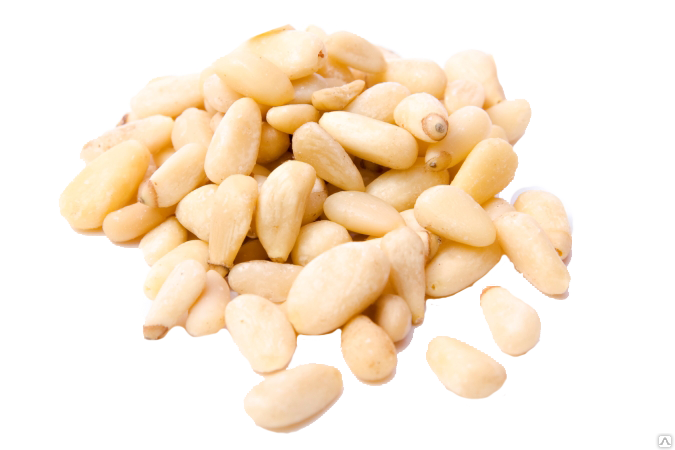
This image has format transparent PNG with resolution 675x450.
You can download this image in best resolution from this page and use it for design and web design.
Pine nuts PNG with transparent background you can download for free, just click on download button.
Pine nuts, also called piñón (Spanish: [piˈɲon]), pinoli (Italian: [piˈnɔːli]), pignoli or chilgoza (Urdu: [چلغوزہ]), are the edible seeds of pines (family Pinaceae, genus Pinus). According to the Food and Agriculture Organization, only 29 species provide edible nuts, while 20 are traded locally or internationally owing to their seed size being large enough to be worth harvesting; in other pines, the seeds are also edible, but are too small to be of notable value as a human food.
In Asia, two species in particular are widely harvested: Korean pine (Pinus koraiensis) in northeast Asia (the most important species in international trade) and chilgoza pine (Pinus gerardiana) in the western Himalaya. Four other species, Siberian pine (Pinus sibirica), Siberian dwarf pine (Pinus pumila), Chinese white pine (Pinus armandii) and lacebark pine (Pinus bungeana), are also used to a lesser extent. Russia is the largest producer of Pinus sibirica nuts in the world, followed by Mongolia, which produces over 10,000 tonnes of forest-grown nuts annually. The majority of the harvest is exported to China. Afghanistan is an important source of pine nuts, behind China and Korea.
Pine nuts produced in Europe mostly come from the stone pine (Pinus pinea), which has been cultivated for its nuts for over 5,000 years. Pine nuts have been harvested from wild trees for far longer. The Swiss pine (Pinus cembra) is also used, to a very small extent.
In North America, the main species are three of the pinyon pines: Colorado pinyon (Pinus edulis), single-leaf pinyon (Pinus monophylla), and Mexican pinyon (Pinus cembroides). The other eight pinyon species are used to a small extent, as are gray pine (Pinus sabineana), Coulter pine (Pinus coulteri), Torrey pine (Pinus torreyana), sugar pine (Pinus lambertiana) and Parry pinyon (Pinus quadrifolia). Here, the nuts themselves are known by the Spanish name for the pinyon pine, piñón (plural: piñones).
In the United States, pine nuts are mainly harvested by Native American and Hispano communities, particularly in the Western United States and Southwestern United States, by the Uto-Aztecan Shoshone, Paiute, Navajo, Pueblo, Hopi, Washoe, and Hispanos of New Mexico. Certain treaties negotiated by tribes and laws in Nevada guarantee Native Americans' right to harvest pine nuts, and the state of New Mexico protects the use of the word piñon for use with pine nuts from certain species of indigenous New Mexican pines.
Pine nuts have been eaten in Europe and Asia since the Paleolithic period. They are frequently added to meat, fish, salads and vegetable dishes or baked into bread.
In Italian they are called pinoli (in the US they are often called pignoli, but in Italy pignolo is actually a word far more commonly used to describe a fussy, overly fastidious or extremely meticulous person) and are an essential component of Italian pesto sauce; the upsurge in the popularity of this sauce since the 1990s has increased the visibility of the nut in America, primarily on the West Coast. Torta della nonna (literally "granny's cake") is a generic Italian dish name that in most families indicates an old family recipe for any kind of cake but often is used for a tart or a pie filled with custard, topped with pine nuts and optionally dusted with icing sugar. Pignoli cookies, an Italian American specialty confection (in Italy these would be called biscotti ai pinoli), are made of almond flour formed into a dough similar to that of a macaroon and then topped with pine nuts.
In Catalonia, a sweet is made of small marzipan balls covered with pine nuts, painted with egg and lightly cooked, and those are called "Panellets". Pine nuts are also featured in the salade landaise of southwestern France. The Nevada, or Great Basin, pine nut has a sweet fruity flavor and is promoted for its large size, sweet flavor and ease of peeling. Pine nuts are also widely used in Middle Eastern cuisine, reflected in a diverse range of dishes such as kibbeh, sambusak, and fatayer, desserts such as baklava, and many others.
Throughout Europe and Middle East the pine nuts used are traditionally from Pinus pinea (stone pine).[dubious – discuss] They are easily distinguished from the Asian pine nuts by their more slender shape and more homogeneous flesh. Because of the lower price, Asian pine nuts are also often used, especially in cheaper preparations. Pine nuts contain thiamine (vitamin B1) and protein.
Pine nut coffee, known as piñón (Spanish for pine nut), is a specialty found in the southwest United States, especially New Mexico, and is typically a dark roast coffee having a deep, nutty flavor; roasted and lightly salted pine nuts can often be found sold on the side of the road in cities across New Mexico to be used for this purpose, as well as a snack.
Pine nut oil is added to foods for flavor.
In this page you can download free PNG images: Pine nuts PNG images free download